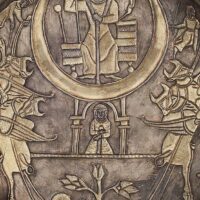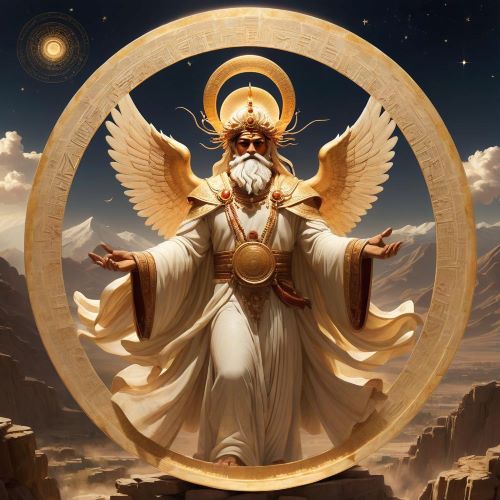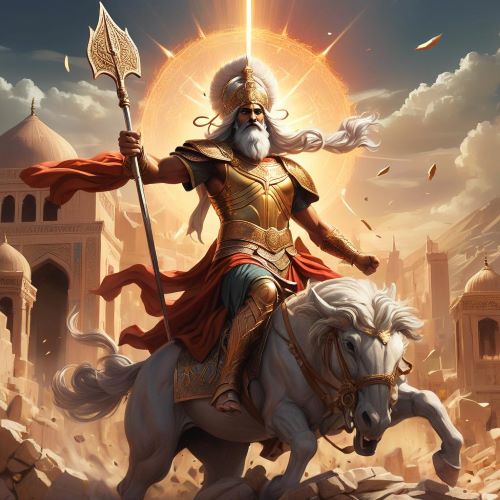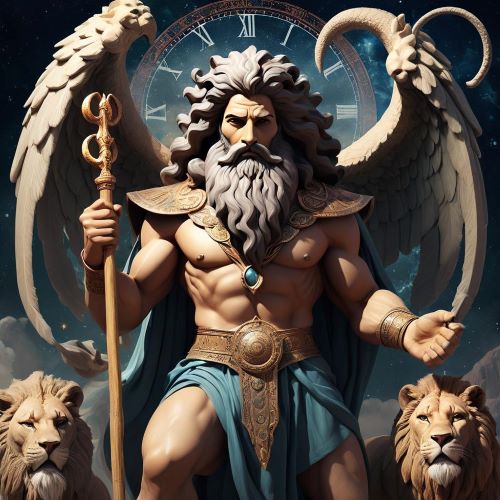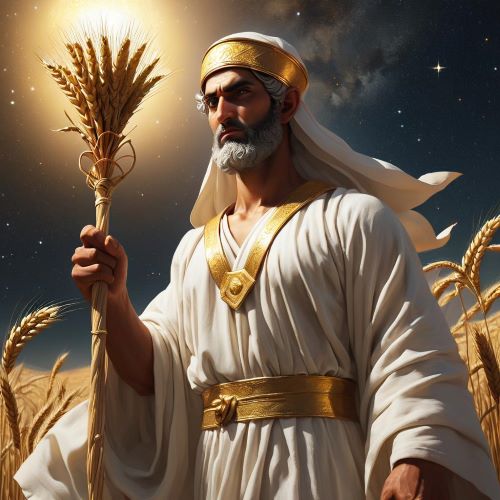Tishtrya : God of Rain
Listen
At a glance
| Description | |
|---|---|
| Origin | Iranian Mythology |
| Classification | Gods |
| Family Members | N/A |
| Region | Iran |
| Associated With | Rainfall, Fertility |
Tishtrya
Introduction
Tishtrya, the Zoroastrian god of rain and fertility, plays a vital role in Iranian mythology. He is celebrated for bringing life-giving water to the earth, ensuring abundant harvests, and sustaining the land’s fertility. As a revered Yazata, or divine being, he is central to the struggle against drought and malevolent forces that threaten prosperity.
In Middle and Modern Persian, his name transforms into Tir, reinforcing his enduring presence in Iranian culture. Tishtrya is closely linked to Sirius, the brightest star in the night sky, which symbolizes his celestial power. This connection underscores his role in ancient Iranian cosmology, where he is seen as a heavenly archer, sending divine arrows to dispel drought and darkness.
Physical Traits
In Zoroastrian mythology, Tishtrya is often portrayed as a brilliant white stallion, his radiance surpassing the stars. This form embodies his purity, vitality, and unwavering role as a bringer of rain. His swiftness and strength are crucial in his eternal struggle against drought, ensuring the land remains fertile and prosperous.
The Avesta, particularly the Tishtar Yasht, describes Tishtrya’s ability to shift forms before facing Apaosha, the demon of drought. He first appears as a vigorous fifteen-year-old youth, representing energy and renewal. Next, he takes the shape of a golden-horned bull, a powerful emblem of fertility and abundance. Finally, he assumes his most recognized form—a magnificent white horse with golden ears and tail—charging toward the cosmic sea Vourukhasha to secure the rains and defeat the forces of aridity.
Family
Tishtrya’s familial ties in Zoroastrian mythology are not as well-defined as those of other deities. However, he is closely associated with Ahura Mazda, the supreme god, who empowers and supports him in his cosmic battles. He also works alongside other yazatas, divine forces that govern natural elements, ensuring harmony in the world.
Some interpretations suggest a celestial connection between Tishtrya and the Tištryāeinī stars, possibly linked to the constellation Canis Minor. While some scholars speculate these stars were considered his celestial companions or “wives,” concrete textual evidence remains scarce. Additionally, a lesser-known figure, Tiri, sometimes appears as a twin deity associated with agriculture, though his role in Persian mythology is not well-documented. Ultimately, Tishtrya is primarily depicted as a solitary yet vital force, devoted to his divine duty of bringing rain and combating drought.
Other names
Tishtrya’s name has evolved across different cultures and time periods. In Middle and Modern Persian, he is called Tir, a name linked to the star Sirius. The Avestan Tištriia is the earliest known form of his name, reflecting his celestial nature. Armenian traditions also adopted Tir, associating him with deities like Apollo and Hermes, further emphasizing his connection to wisdom and cosmic forces. These linguistic shifts highlight the lasting impact of Tishtrya across various cultures and belief systems.
Powers and Abilities
Tishtrya’s divine power is centered on rainmaking and fertility, ensuring the earth remains nourished and life can flourish. More than just a bringer of rain, he governs bodies of water such as rivers and lakes, reinforcing his role as a guardian of abundance and balance. His celestial nature, tied to Sirius, further emphasizes his influence over weather and agriculture.
A key myth highlights his epic battle against Apaosha, the demon of drought. Tishtrya first struggles in combat, but with Ahura Mazda’s blessing, he regains strength and defeats Apaosha, bringing long-awaited rain to the land. His ability to transform—appearing as a youthful warrior, a golden-horned bull, and a radiant white stallion—demonstrates his adaptability and strength. He also collaborates with other celestial forces, such as the star Satavaesa, to ensure water is distributed across the world, solidifying his role as a cosmic protector.
Modern Day Influence
Although Zoroastrianism is no longer a major religion, Tishtrya’s influence remains woven into Persian culture and traditions. The month of Tir (June–July) in the Iranian calendar bears his name, and the ancient festival of Tirgan continues to honor his role as the bringer of rain. Celebrated with water splashing, poetry readings, and the tying of colorful bands on wrists, Tirgan symbolizes gratitude for water’s life-giving power and invokes Tishtrya’s blessings for abundance.
Beyond festivals, Tishtrya’s legacy lives on in literature, art, and cultural narratives. His battle against drought serves as a timeless metaphor for resilience, renewal, and the balance between opposing forces. His name and mythology continue to inspire those interested in Iran’s rich spiritual heritage, reflecting an enduring connection between past and present.
Related Images
Source
Boyce, M. (1982). A History of Zoroastrianism: Volume II: Under the Achaemenians. E.J. Brill.
Dhalla, M. N. (1938). History of Zoroastrianism. Oxford University Press.
Hinnells, J. R. (1985). Persian Mythology. P. Bedrick Books.
Jackson, A. V. W. (1928). Zoroastrian Studies: The Iranian Religion and Various Monographs. Columbia University Press.
Zaehner, R. C. (1956). The Teachings of the Magi: A Compendium of Zoroastrian Beliefs. Oxford University Press.
“Tirgan Festival.” Encyclopaedia Iranica, .
“Tishtrya.” Zoroastrian Heritage, .
Frequently Asked Questions
What is lorem Ipsum?
I am text block. Click edit button to change this text. Lorem ipsum dolor sit amet, consectetur adipiscing elit. Ut elit tellus, luctus nec ullamcorper mattis, pulvinar dapibus leo.
What is lorem Ipsum?
I am text block. Click edit button to change this text. Lorem ipsum dolor sit amet, consectetur adipiscing elit. Ut elit tellus, luctus nec ullamcorper mattis, pulvinar dapibus leo.
What is lorem Ipsum?
I am text block. Click edit button to change this text. Lorem ipsum dolor sit amet, consectetur adipiscing elit. Ut elit tellus, luctus nec ullamcorper mattis, pulvinar dapibus leo.
What is lorem Ipsum?
I am text block. Click edit button to change this text. Lorem ipsum dolor sit amet, consectetur adipiscing elit. Ut elit tellus, luctus nec ullamcorper mattis, pulvinar dapibus leo.
What is lorem Ipsum?
I am text block. Click edit button to change this text. Lorem ipsum dolor sit amet, consectetur adipiscing elit. Ut elit tellus, luctus nec ullamcorper mattis, pulvinar dapibus leo.



